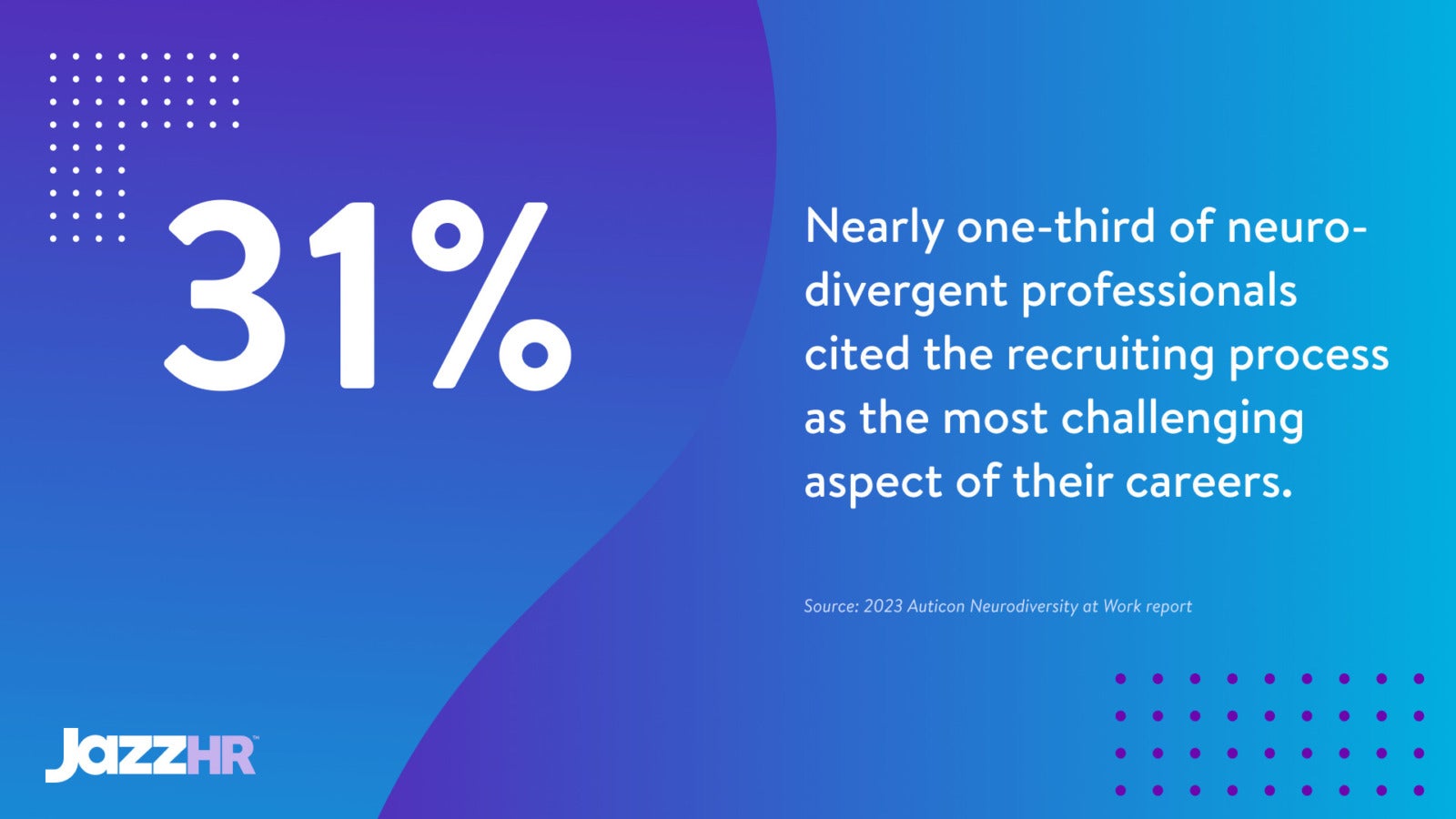Around one in eight people identify as neurodivergent, and many more adults are missed or misdiagnosed. That’s a significant proportion of the workforce. Encouraging employees to thrive and contribute their best work means considering neurodiversity in the workplace.
This applies both when hiring and supporting your team over the long term.
Accounting for neurodiversity in relation to your work environment doesn’t just benefit your staff. When you draw from different perspectives, you get outside-the-box ways of thinking that can help your business innovate. As scientist and autism activist Dr. Temple Grandin said:
- “Without people with autism, humans would still be living in caves.”
In short, there are advantages of neurodiversity in the workplace. Before your business can realize said benefits, though, you need to understand how you can support a neurodiverse workforce and make these employees feel comfortable in both their roles and included your company culture.
Below, we offer insights into what neurodiversity is, how your company can embrace neurodiverse talent, and what it takes to create an inclusive workplace that sets these individuals up for success.
What is neurodiversity? A breakdown
First, let’s explore what we mean by neurodiversity.
The term has been around for about 20 years, but it has only recently come into prominence as part of a shift to the “social model” of disability. This model suggests that disability is more external circumstances that impact a person, and less a set of personal attributes. So, the person with ADHD is disabled by a busy, loud office environment. They themselves are not “the problem.”
Per CIPD’s Neurodiversity at Work report:
- “Neurodiversity is a biological fact of the infinite variety of human neurocognition. Now, the same term ‘neurodiversity’ is also being used to represent a fast-growing sub-category of organizational diversity and inclusion that seeks to embrace and maximize the talents of people who think differently.”
Neurodiversity encompasses a broad range of cognitive functioning differences, from ASD (Autism Spectrum Disorder) to ADHD (Attention Deficit Hyperactivity Disorder) to things like dyslexia, dyspraxia, or Tourette’s syndrome.
It’s not the same as a learning difficulty or mental illness, though of course, the same principles of accommodation and support apply. Those factors do tend to feature more predominantly in the neurodiverse population, though, which is something employers will want to take into consideration. One person may be autistic and have a learning difficulty and anxiety, for example.
It’s worth noting that some people prefer the term “neurominority,” which isn’t as widely used but is growing in popularity.
Hiring neurodiverse employees
About 80% of autistic adults with a college degree are either not working or doing a job far below their education level. There is clearly a barrier to employment, and an opportunity to be the employer that makes a difference.
Don’t dismiss applications based on spelling or numerical mistakes. A person with dyslexia, dyscalculia, or dysgraphia could struggle in this area. Unless you’re hiring judges for a spelling bee, it’s likely something your business can workaround.
- It’s also important to accommodate the requested means of contact. A person with dyslexia may prefer a phone call. On the other hand, an autistic person may not be able to properly read social cues over the phone, so could find the format challenging.
It’s worth including a section in your application for candidates to share their preferences.
Also, be sure to offer a distraction-free environment for the interview, or allow people to interview via video conference to help reduce their anxiety or discomfort. (You could even remove the panel interview entirely and use work trials instead.)
In the interview, devalue body language such as eye contact. Often, a neurodivergent person will not appear to be listening in a typical way and may look around the room or appear to be fidgeting.
- It’s also important to give people a chance to correct themselves if they misspeak in the interview process, or to take a break and return to an interview question after they’ve had time to process it.
When hiring, the worst thing you can be is quick to judge. It can lead you to dismiss talented candidates for superficial reasons. Ensure you have great attention to detail when evaluating candidates and avoid any form of bias in assessing prospects, including neurodiverse people.
Neurodiversity inclusion: Creating an enabling workspace
A vibrant workspace (think open-plan, brightly lit, busy) could be a real barrier to your neurodivergent employees. A common characteristic of the neurodivergent mind is often heightened sensitivity to sensory input. Making these minor changes to the environment can help:
- Design your workspaces with quiet areas or concentration rooms.
- If you can, avoid using fluorescent lighting or bare-bulb lights.
- Make use of plants to create a more soothing, productive, and stress-free environment.
- Put clear signage in place to help your employees orient themselves more easily.
- Give people options such as ergonomic seating, standing desks, or other assistive equipment.
Remember, you are obliged under the Americans with Disabilities Act (ADA) (and the 2008 amendments to the Act) to provide reasonable accommodations for employees. That includes neurodivergent teammates.
You also need to think about your policies. Some of these suggestions might seem radical, but don’t dismiss them out of hand. Think about what is and isn’t actually necessary for achieving good work.
- Communicate important information, big changes, or instructions clearly and via at least two different mediums — written and verbal.
- Have a policy that allows the use of noise-canceling headphones (and even music!).
- Don’t insist on a uniform if the employee is not customer-facing. Otherwise, make sure uniforms are comfortable.
- Offer exceptions to a hot desk policy.
- Give people the option to work from home, on a flexible or full-time basis.
- Allow people to take breaks as they need them, rather than at a designated time.
- Create an allyship program, or include neurodiversity in your existing DEI program.
- Have a workplace bullying policy that has precise wording around neurodiversity. Neurodivergent people are often the target of bullying: half of managers say they are uncomfortable with having neurodivergent employees.
Many companies such as JP Morgan & Chase, SAP, and Microsoft have implemented programs dedicated to hiring neurodivergent talents. They’ve seen impressive results.
One of the hallmarks of neurodiversity is a “spiky profile” of skills. That means that in some areas the individual is exceptionally talented, but may struggle in other areas. Therefore, it’s more affirming for your employee and useful for your business to “go with the grain.” That is, focus on building the strengths of the person.
This, more than any of the other tips provided here, will make the biggest impact.





